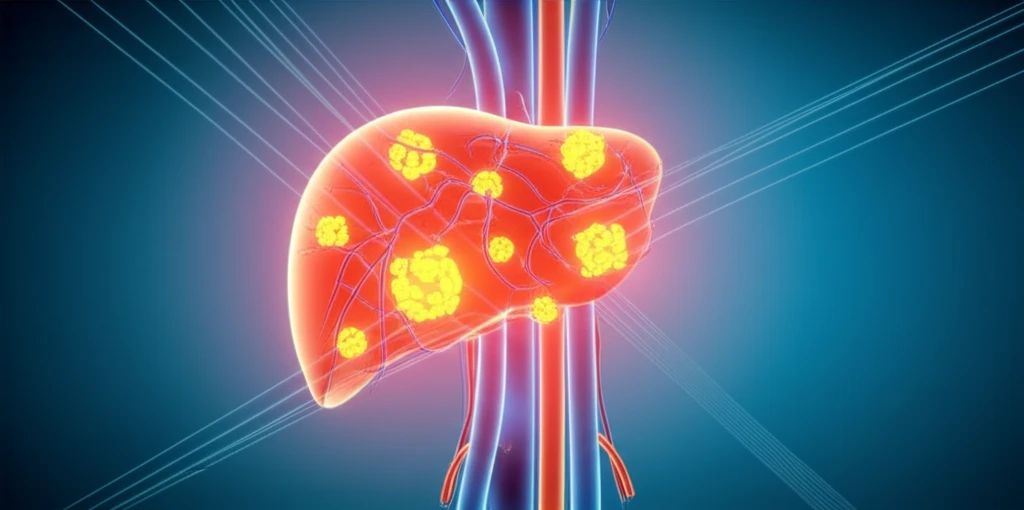
Precision vs. Practicality: Are We Overthinking Liver Cancer Treatment?
"A new study questions the accuracy of current methods for calculating radiation doses in liver cancer treatment, suggesting variability may lead to unexpected outcomes."
For individuals facing liver cancer, Yttrium-90 radioembolization (Y90 RE) offers a beacon of hope, however, ensuring that the treatment is delivered with utmost precision is critical. The method involves delivering tiny radioactive beads directly to the liver tumors. But how do doctors calculate the correct radiation dose? The answer is more complex than one might think, with potential for significant variability.
Typically, doctors rely on imaging techniques such as CT scans and MRIs to estimate the size of the liver and tumors. These volume measurements are plugged into a formula that determines the appropriate amount of Y90 to administer. A recent study, however, shines a light on the potential for inaccuracies in this process, particularly when compared to cone-beam computed tomography (CBCT), a technique performed during the procedure itself.
The study raises important questions about whether current methods of liver volume calculation are as precise as they need to be, and whether this variability could be leading to unintended consequences in treatment outcomes. It's a reminder that in the world of oncology, even seemingly small discrepancies can have a ripple effect.
Cone-Beam CT vs. Traditional Imaging: What's the Difference?

The key to understanding the study's findings lies in grasping the difference between CBCT and traditional imaging methods like CT and MRI. While CT and MRI provide detailed anatomical images, they rely on external contrast injected into the body. CBCT, on the other hand, is performed during the actual angiography, allowing doctors to visualize the liver's blood supply in real-time.
- CBCT: Real-time imaging during angiography, visualizes blood supply, identifies variations in anatomy.
- CT/MRI: Relies on external contrast, provides detailed anatomical images, may not capture real-time blood flow dynamics.
The Path Forward: Balancing Precision and Practicality
This study serves as a reminder that even in advanced medical treatments, there's always room for improvement. While CBCT offers the potential for more precise radiation dose calculations, it also presents practical challenges such as the need for specialized equipment and expertise. The findings highlight the need for ongoing research to refine our methods of liver volume calculation and ensure that patients receive the most effective and safe treatment possible. Further investigation is necessary to see if the variability noted here affects treatment results.
